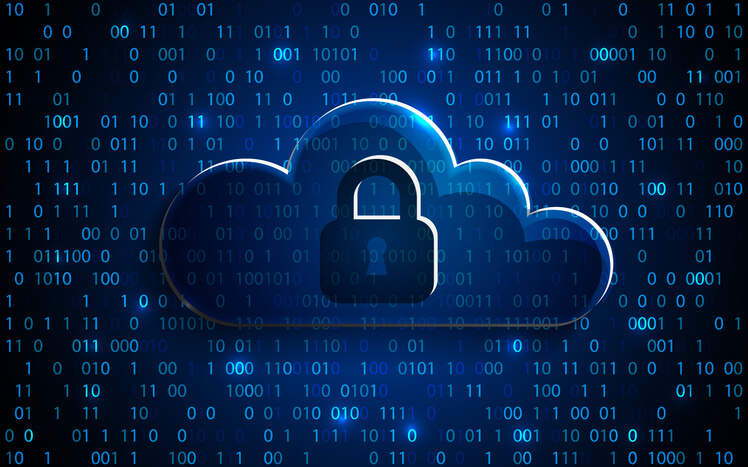Talk to our experts to launch your information security career. Start your 30-day free trial today!

How to Create a Security-Centric Culture?
The world economy continues to flourish and become more and more innovative as we speak. Today, the conversion rates toward adapting digital solutions are fiercer and more current than ever before. Many businesses, and even the B2C and B2B enterprises, are considering moving their assets online with the help of the internet and cloud.
But there remains a stagnant issue with this approach, and that is the security of the online systems and their data. If consumer data protection, corporate information and other elements can't be promised, then there is simply no point in taking things live on the internet.
Thus, the need for a security-centric culture becomes more prominent and something of a spotlight for such enterprises. Data must remain secured in transit, at rest, or even when considering the provision of access to certain people. These cyber and data breaches are taking their toll on the digital businesses. More hacks mean more humiliation and money lost in terms of securing the assets, but the most severe blow of them all is the loss of data and its non-recoverability in case it was not backed up. Connect with our experts to learn more about our IT security courses.
If you, as an organization or enterprise, are moving forwards to developing a cybersecurity strategy, you must first study the breaches around which you are going to develop your strategy. A cyber breach can have multiple instances, such as occurring through human error in terms of a phishing attack, being a result of an insider attack, or solely the engineering of a hacker pulling strings from the outside. It is important to understand what were the elements that took you by storm and what kind of vulnerabilities were present in your case.
Building a culture that values the concept of cybersecurity is the first step towards building a sound culture. It involves shifting the mindset of all employees and urging them to take part in dedicated workshops and follow the set rules in place in response to the security of the data and other dedicated assets.
What Is Security-Centric Culture?
At its core, security culture is a manifesto that employees of a specific organization presenting this manifesto with have to agree to work there. It encourages employees to make decisions and fulfill their day-to-day duties in effect with the security policies that have been introduced by the organization. Talking about embedding these security policies into their daily activities, the chances of mitigating the security and cyber threats increase gradually. The compliance can also be improved regarding some of the most complex compliance regulations.
A security culture might not be the most ulterior defense a company has against the cyber threats it faces, but it is the most incredible one at the end of the day. When everyone focuses on the same set of rules and does their best to stay within the set boundaries in terms of security by the organization, then the chances of human error get reduced indefinitely. When human error is at the bare minimum, the chances of actual breaches to surface up is also reduced at a consistent rate, thus providing the organization with the time and energy to focus on strengthening their network and data security. They can also work on implementing a data backup system to make sure that they are always covered no matter the situation.
The following are some of the tips that you can use implement a security-driven culture at your organization:
Employ a Leadership-Driven Cyber Governance
All the big shifts need to be initiated at a senior level for employees to follow and respect that decision. That is why it’s important to make sure that your leadership, such as the stakeholders, management and audit team, strictly follow and comply with the security guidelines that your company has initiated for them. It should come out as the leadership is willing to reflect some passion and understanding of the latest security shifts that have been made. They should also bring it on as a cultural shift that is taking place from the upper level towards the employees.
Regular meetings and arranging workshops can be a way of doing that between employees and the company's senior InfoSec leaders. A presentation could be delivered by the senior management explaining the threats that the company is currently facing and the security changes that have been made to mitigate those threats. A little emphasis should also be made toward adapting these latest guidelines and changes made to ensure security and how the company will be benefiting from all this in the future.
Dedicated managers can also prove to be an asset in this regard, since they have to work with the employees at a more direct note and can emphasize the need for this security drift and why it is absolutely important that everyone acts as a team player. The most secure approach that can be used here is the initiation of following these security guidelines by managers and not violating even the slightest of detail in front of the employees.
For example, if a manager is violating the company's security charter or policies by bringing their own devices to work and connecting them with the secured network of the company, the employees themselves won't care much. An example needs to be set, and some strict approach should be adapted to do so.
When the leadership and management are committed to ensure or force the security principles and policies, then the employees and workers will take this whole thing on a more serious note. Otherwise, it is a futile cause that leads nowhere.
Clearly Document the Security Policies
Don’t give employees or management the benefit of the doubt that they didn’t know about a particular element or part of the security policies just because it was not mentioned clear enough. What you need to do is to clearly document all the security policies in a single place and make it available to each and every member of your organization. It will remove the benefit of the doubt and the whole thing backfiring at you for not making things more visible or noticeable to each and every member of your organization. A security policy is the most enticing thing of the security culture, because it will guide the employee behavior towards the use of the resources and how they can best use them.
That is why it is necessary that you should create two different documents. The first document should be for the official security policy that is prepared and signed by all the stakeholders. It will carry all the rules and procedures that everyone accessing the resources of the company should follow and respect. These resources can be the IT systems or the handling of the data.
The other document can be an informal one created by HR that will explain the vision of security and highlight why the following security practices matter to maintain the very definition of security for the company. It’s essential to also explain why it matters for the growth of the business and every employee that is involved.
There should also be a few punishments when an employee fails to follow the security policy. It can even be critical violation that results in an immediate termination from the job.
Start a 30-day FREE TRIAL with InfoSecAcademy.io to launch your career in InfoSec.
Training of the Employees
The next thing is to conduct effective training for your employees. What you need to do here is to build a dedicated training workshop around the needs of your employees and the security policies that you have already introduced. Only when they have a live experience with all this can they begin to understand the broader concept that is being fed here.
There are all sorts of training options available, such as using only a PowerPoint-oriented presentation that explains all the points present in your security policy or taking an even modern approach by conducting workshops and training sessions for the employees. Companies make sure that every new employee starting with them has seen or experienced a video training session that explains pretty much all the dos and don'ts in relation to their particular training policy.
This way, they can learn the classical steps mentioned in your security policy at their own pace and get a chance to review them to get a specific mental picture to follow. This approach is mainly used for people who have just joined the company, but there is no harm in extending its reach to already working employees who might need a refresher course on the security policies of the company. Another approach that can be used here is the use of role-playing exercises to deliver knowledge.
They can walk through a specific scenario or a challenge and be tasked with solving it according to the company's security policy and see how they do it. Sure, they are going to stagger along the way or make mistakes, but that is where coordinators come into play. This way, your employees have the chance to learn all the crucial aspects of the security policy in a playful way and, more importantly, have a more hands-on experience with each and every one of them.
Ensure that you change or customize the content of the exercise or the training according to the partaker's explicit needs who will interact with it. If you can't be too specific about it, then at least have it all tailored according to a specific department.
Encourage Everyone to Report Incidents
There is one crucial lesson that you need to learn as a leader or manager of the company, and that is to always sympathize with your employees, make them feel heard and valued. On the other hand, if you are running a factory where you extract labor out of people, or they fear you, then the whole system comes crashing down on your feet as it will not be able to fly for too long. But due to this ravishing sense of fear or dislike towards you, people would not report the indents that they are encountering.
Every incident or breach needs to be reported right away so that an action can be taken in this regard. If no one is reporting these vulnerabilities, then there are chances that it might have already penetrated your system too deep for you to do anything about it.
By getting everyone on board with the reporting of errors, incidents and vulnerabilities, you will get them to report these vulnerabilities faster and arrange an incident response plan sooner than later to contain the issue right away. Managers should recognize the team members who helped with detecting and reporting the problem and should be awarded. It will send out a great example that everyone is welcome to do the same and will also get recognized for their help.
There are plenty of information security certifications, but you should go with those that suit your career choices best, engage in training, pass the examination and get recognized for great job opportunities.
